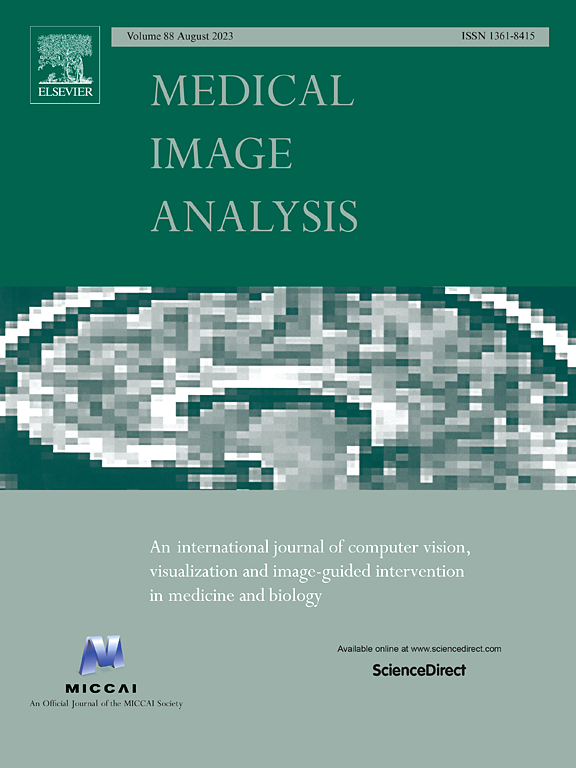Fast and ultra-high shot diffusion MRI image reconstruction with self-adaptive Hankel subspace
IF 10.7
1区 医学
Q1 COMPUTER SCIENCE, ARTIFICIAL INTELLIGENCE
引用次数: 0
Abstract
Multi-shot interleaved echo planar imaging is widely employed for acquiring high-resolution and low-distortion diffusion weighted images (DWI). These DWI images, however, are easily affected by motion artifacts induced by inter-shot phase variations which could be removed by enforcing the low-rankness of a huge 2D block Hankel matrix of the k-space. Successful applications have been evidenced on 4∼8 shots DWI but failure was observed on ultra-high shots, e.g. 10∼12 shots, limiting the extension to higher-resolution DWI. Moreover, the 2D Hankel matrix reconstruction is very time-consuming. Here, we propose to accelerate the reconstruction through decomposing this huge 2D matrix into small 1D lOw-raNk HAnkel (DONA) matrices from every k-space readout line. This extension encounters another problem of variant low-rankness across the k-space. To address this issue, we propose to separate signal subspaces of 1D Hankel matrices into the strong and uncertain ones. The former is pre-estimated from an initial image to reduce the degree of freedom in reconstruction. The latter protects image details in reconstruction by avoiding the overshadowing on small singular values. This method is called DONA with self-adapTive subspacE estimation (DONATE). In vivo results show that DONATE can not only accomplish 4-shot reconstruction in 10 s but also the reconstruction of 12 shots with 10 times faster computation. Besides, DONATE shows superiority on low-distortion spine DWI reconstruction and subjective image quality evaluation in terms of blind scoring by 4 radiologists.

求助全文
约1分钟内获得全文
求助全文
来源期刊

Medical image analysis
工程技术-工程:生物医学
CiteScore
22.10
自引率
6.40%
发文量
309
审稿时长
6.6 months
期刊介绍:
Medical Image Analysis serves as a platform for sharing new research findings in the realm of medical and biological image analysis, with a focus on applications of computer vision, virtual reality, and robotics to biomedical imaging challenges. The journal prioritizes the publication of high-quality, original papers contributing to the fundamental science of processing, analyzing, and utilizing medical and biological images. It welcomes approaches utilizing biomedical image datasets across all spatial scales, from molecular/cellular imaging to tissue/organ imaging.
 求助内容:
求助内容: 应助结果提醒方式:
应助结果提醒方式:


